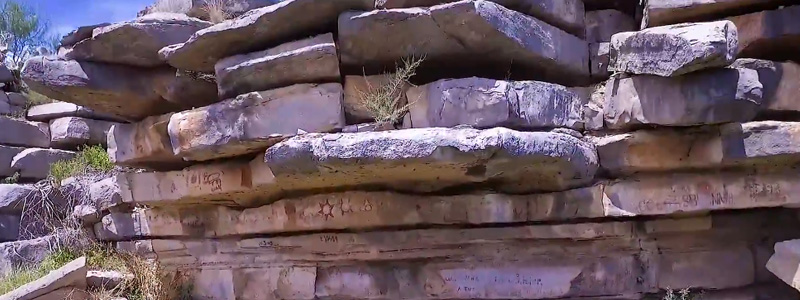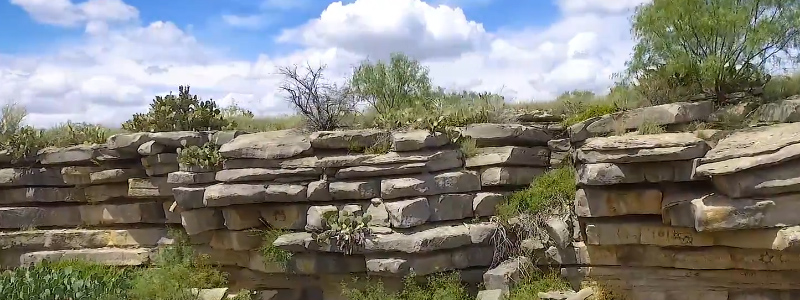Ancient Paintings on Ranch Near Town of Paint Rock
Take a step back into Texas history as you explore over 1,000 Indian pictographs at this historic site in West-Central Texas.
The orientation of the rock bluff from east to west provided early visitors to this part of Texas a natural shelter from winter winds and summer sun. As many as 300 different cultures used this spot along the Concho River for about 1,200 years, leaving hundreds of images in shades of black, white, yellow, and red. Creating the red color, present in most of the images, required the painters to carry heavy hematite or iron ore rocks from some 100 miles away. They then ground the rocks down and mixed the resulting powder with animal fat to make the paint. The images include a variety of subjects such as hand prints, birds, human figures, suns, and symbols. Certain ones mark, with astonishing accuracy, the summer and winter solstices, which would have been important seasonal events for these natives.

Natural rock overhangs helped preserve the paintings until the first European settler, D.E. Sims, saw them in 1870. Sims purchased the land in order to protect the paintings, some of which had already been vandalized.
Guided Tours of Paint Rock Art
Sim’s granddaughter Kay Campbell and her husband Fred now own the ranch just outside the tiny town of Paint Rock. The Campbells provide guided tours of the 1,500 or so images. Beginning with a talk in a small visitor Center, Kay Campbell demonstrates making red paint and lets visitors handle genuine artifacts from the site, including a hematite rock worn smooth from years of grinding. She wrote and illustrated a guide that examines possible meanings of the paintings. The image of a canoe, she says, may represent an actual boat seen on the river, or a burial practice. A shaded circle may portray a solar eclipse. A turtle within a circle is likely a solstice symbol. She points out images as she leads tours along the bluff, along with wildlife such as a flock of turkeys or vermillion flycatcher.
Paint Rock Texas
Paint Rock Texas, the county of Concho County, is the in the north central part of the county at the junction of Ranch Road 380 and U.S. Highway 83, about twenty-one miles northeast of Eden. The town was named for the extensive Indian pictographs about a miles away on the bluffs of the Concho River. In 1884, Paint Rock became a center for wool, hides, pecans and mutton. A Post office was acquired in 1879, that same year a subscription school opened.
Other Attractions in Paint Rock Area
Concho County, where the ranch is located, once reigned as the nation’s leading sheep-producing county. It was Sims who brought the first sheep here, and the Campbells and many of their neighbors still raise sheep and goats for their wool and hair. Ingrid’s Custom Hand Woven, a small shop at the intersection that pretty much is the entire town, uses those raw materials to create rugs of all sizes. The rugs are hand loomed on the property using spools of wool spun around a string of jute, which results in durable, reversible rugs. Owner Rienhard Schoffthaler takes custom orders for rugs up to 12 feet wide and any length, in any combination of 76 solid or 76 pastel colors.
F.E. Ruffini designed the 1886 Second-Empire style Concho County Courthouse, as well as Texas’ Blanco County Courthouse and Millet Opera House on 9th Street in Austin. The spacious second-story courtroom, which stretches all the way across the building, still sees a fair number of weddings.
Those headed to Paint Rock down US 83 around lunch time or on Friday or Saturday evenings often turn off at tiny Melvin, home of Jacoby’s Café. The no-frills restaurant serves beef from Angus cattle raised from start to finish right there on the Jacoby Ranch.
Appointments for Paint Rock Excursions on the Campbell Ranch can be made by calling 325/732-437

